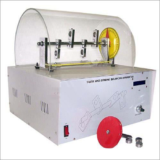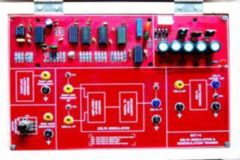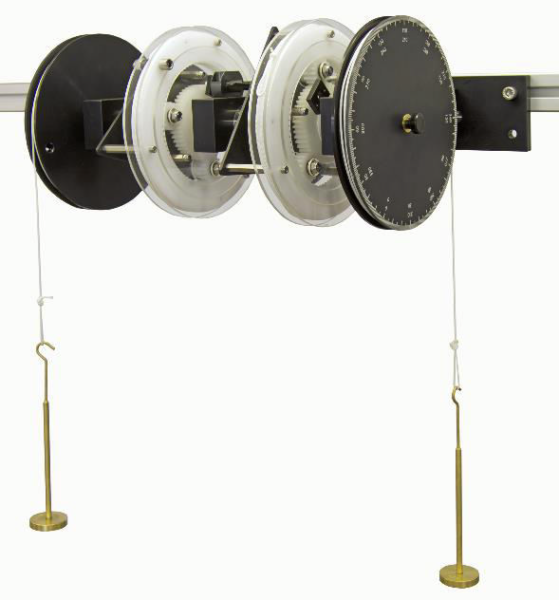Epicyclic Gear Train Apparatus Model MT 131
Home » Products » Epicyclic Gear Train Apparatus Model MT 131
Epicyclic Gear Train Apparatus Model MT 131
Sci-tech Epicyclic Gear Train Apparatus Model MT 131 consists of two standard epicyclic gear trains. Each gear train consists of a sun gear in the centre, three planet gears, a planet linkage and an internal or ring gear. The sun gear, ring gear and planet carrier all rotate about the same axis. The planet gears are mounted on shafts that turn in planet carrier and meshes with both the sun gear and the ring gear. Pulleys fitted with protractors are attached to the input and output shaft so that torque and velocity ratios may be determined.
Torques can be applied to the shaft by adding weights on cords wrapped on the pulleys. Bearings are used in the entire unit to minimize friction losses.
Model MT 131, can be operated in one a variety of modes. Locking pins are used to holding different parts of the apparatus in position. This gives the user different options on gear ratios that can be applied between the input and output shafts. By changing the combinations between the first and second epicyclic gear sets a wide range of ratios and different output directions can be produced. Efficiencies can be calculated for the units operation as well as theory tables given for the different gear combinations.
| Size: | 120cm x 60cm x 60cm (LxWxH) |
| Weight: | 25 kg |
Item Description
Features
- Wall Mounted Dual Epicyclic Gears
- Plastic gears for smooth operation and noise reduction
- Gear ratios can be adjusted
- Locking devices to stop rotation while setting up weights
- Transparent Gear Guards for safety and visibility
- All weights supplied
Sci-tech Epicyclic Gear Train Apparatus Model MT 131 consists of two standard epicyclic gear trains. Each gear train consists of a sun gear in the centre, three planet gears, a planet linkage and an internal or ring gear. The sun gear, ring gear and planet carrier all rotate about the same axis. The planet gears are mounted on shafts that turn in planet carrier and meshes with both the sun gear and the ring gear. Pulleys fitted with protractors are attached to the input and output shaft so that torque and velocity ratios may be determined.
Torques can be applied to the shaft by adding weights on cords wrapped on the pulleys. Bearings are used in the entire unit to minimize friction losses.
Model MT 131, can be operated in one a variety of modes. Locking pins are used to holding different parts of the apparatus in position. This gives the user different options on gear ratios that can be applied between the input and output shafts. By changing the combinations between the first and second epicyclic gear sets a wide range of ratios and different output directions can be produced. Efficiencies can be calculated for the units operation as well as theory tables given for the different gear combinations.
Sci-tech can supply the optional ‘Sci-Cal’ software & hardware interface which gives accurate real-time data capture, monitoring and display, calculation and charting of all important readings on a computer.
See also different:

ci-tech Air Flow Bench – Modular Design Model FM92 is designed to demonstrate behavior of bodies during flow around or through bodies with a compressible fluid. The purpose of experiments is familiarization with and optimization of drag and th [...]

Sci-tech Static & Dynamic Balancing Apparatus Model MT 123 allows students to do experiments in balancing a rotating mass system and check their results against accepted theory. A sturdy base unit holds a test assembly on four flexible mou [...]

Sci-tech Basic Communication Trainers TCM 005 Series offer students understand basic concepts of communication through exhaustive experiments. The Kits offer on-board necessary signal generator and power supply and silk screen printed circuit [...]

